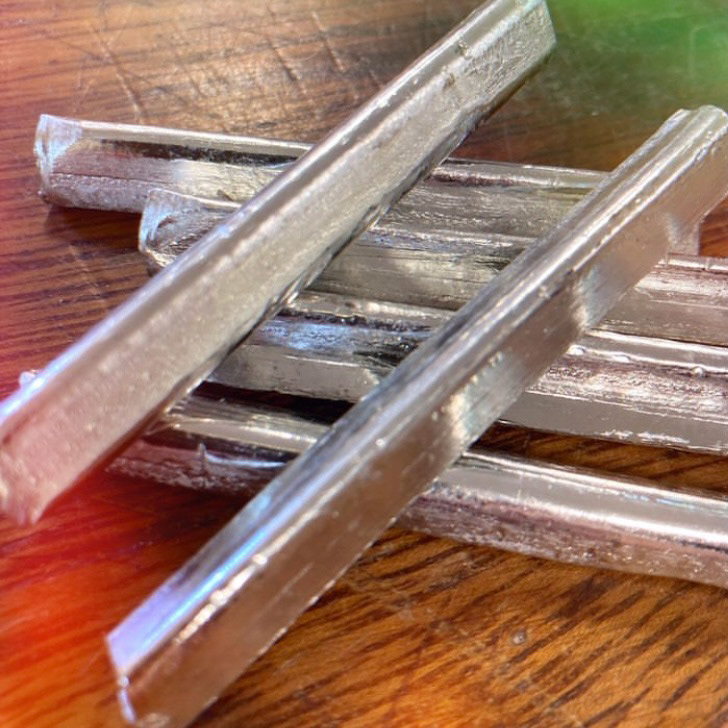

The Fascinating History of Pewter: From Ancient Artefacts to Modern Masterpieces
Pewter, a silvery-gray alloy primarily composed of tin, has a rich history spanning thousands of years. Its enduring appeal lies in its malleability, durability, and aesthetic versatility.
I love casting in pewter - its low melting point makes it a great way to test ideas, try new things and to work on new projects. Recently it has been shells and fossils that I have been working with collected from beaches in Wales in from the North East of England.
This blog explores the journey of pewter from ancient civilisations to its place in contemporary art, highlighting key historical moments and its evolving uses.
Origins and Ancient Use
Pewter's history dates back to ancient times. The earliest known use of pewter was in ancient Egypt, where it was found in the tombs of pharaohs dating back to around 1450 BCE. The alloy was valued for its practical and decorative applications.
Ancient Rome: Pewter was also used extensively in ancient Rome for household items such as plates, bowls, and drinking vessels. The Romans appreciated its durability and the ease with which it could be shaped and decorated.
Medieval Europe: Pewter’s popularity surged during the medieval period in Europe. It became the material of choice for a variety of domestic and religious items.
Tableware and Utensils: By the 12th century, pewter tableware had become common among the European elite. Pewter guilds were established to regulate the quality and production of pewter goods, ensuring a standard of craftsmanship.
Religious Artefacts: Churches and cathedrals adorned their altars with pewter chalices, candlesticks, and other liturgical items, taking advantage of the metal's ease of engraving and moulding.
Renaissance and Artistic Flourishing
The Renaissance era marked a period of innovation and artistic flourishing for pewter. Artisans began experimenting with more intricate designs and techniques.
Decorative Arts: Pewter was used to create detailed sculptures, ornate plaques, and elaborate household items. The ability to engrave and emboss pewter allowed for intricate and highly decorative pieces.
Colonial America: Pewter crossed the Atlantic with European settlers and became a staple in colonial American households. It was used for practical items such as plates, mugs, and utensils, favoured for its availability and functionality.
Decline and Revival
The advent of new materials like porcelain and glass in the 18th and 19th centuries led to a decline in pewter's popularity. However, the late 19th and early 20th centuries saw a revival of interest in pewter, particularly through the Arts and Crafts movement.
Arts and Crafts Movement: This movement emphasised the importance of handcrafted quality and traditional techniques. Pewter artisans created beautifully designed items that combined utility with artistic expression, reviving interest in the alloy.
Contemporary Uses: Pewter is used in a wide range of products, including jewellery, decorative objects, and collectible items. Its non-corrosive properties and ability to take on various finishes make it a versatile material in modern design.
One significant evolution in the history of pewter was the removal of lead from its composition. Historically, lead was a common component in pewter alloys, used to lower the melting point and improve the metal's malleability. However, over time, it became clear that lead posed serious health risks, including lead poisoning, which could occur through prolonged contact with pewter tableware and utensils. By the 18th century, awareness of these dangers led to the gradual reduction and eventual elimination of lead from pewter alloys. Modern pewter, often referred to as "lead-free pewter," is typically composed of tin, with small additions of copper and antimony for strength and durability. This change not only made pewter safer for everyday use but also preserved its appeal as a material for high-quality, artistic craftsmanship.
Conclusion
Pewter's journey from ancient artefacts to modern masterpieces highlights its enduring appeal and versatility. Whether found in a medieval castle or a contemporary home, pewter remains a testament to human creativity and craftsmanship. Its rich history and timeless beauty continue to inspire artisans and collectors around the world.
References and Bibliography
Cotterell, H. (1963). Old Pewter: Its Makers and Marks in England, Scotland, and Ireland. Batsford.
Hornsby, P. (1983). Pewter of the Western World, 1600-1850. Schiffer Publishing.
Peal, C. (2001). Pewter: A Celebration of the Craft, 1200-1700. ACC Art Books.
Egan, G. (1998). Medieval Finds from Excavations in London: 3. Dress Accessories, c.1150-c.1450. Boydell & Brewer.
Kane, P. (2006). The Old Silver and Old Sheffield Plate: A History of the Silversmith's Art in Great Britain and Ireland. Hansebooks.
Noel Hume, I. (1969). A Guide to Artefacts of Colonial America. University of Pennsylvania Press.










